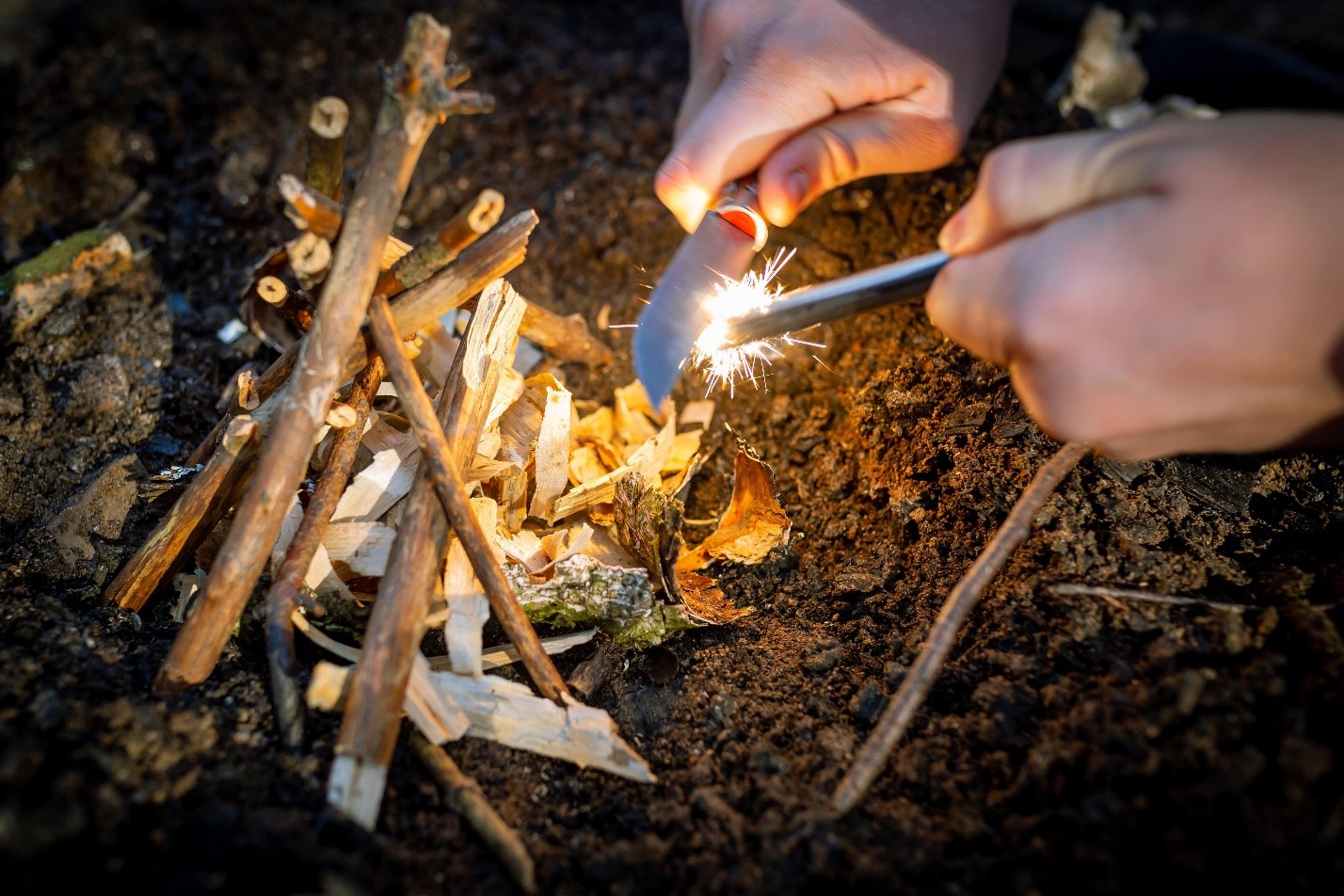Fire has been a fundamental human tool for warmth, cooking, and survival for thousands of years. While modern technology has provided us with countless conveniences, the ability to build a fire remains a crucial skill, especially for outdoor enthusiasts, campers, and survivalists. However, building a fire isn’t a one-size-fits-all process. Different environments present unique challenges, whether it’s a damp forest, a snowy mountainside, or a windy desert. In this guide, Angelo Dellomo will explore essential tips and techniques to master the art of fire building in any environment.
Understanding the Basics of Fire Building
Before diving into environment-specific strategies, it’s essential to understand the three basic components of a fire: fuel, heat, and oxygen. This is known as the fire triangle. Without one of these elements, a fire cannot sustain itself.
- Fuel: Fire needs material to burn, and this comes in three forms:
- Tinder: Small, dry materials that catch fire easily (e.g., dry grass, wood shavings, or cotton).
- Kindling: Slightly larger sticks or twigs that sustain the flame from the tinder.
- Fuelwood: Larger logs that keep the fire burning long-term.
- Heat: The initial spark or flame to ignite the tinder. This can come from matches, a lighter, flint and steel, or even friction-based methods like a bow drill.
- Oxygen: Fires need airflow to thrive. Too little air, and your fire will suffocate; too much wind, and it may blow out.
By understanding these components, you’ll have a solid foundation for fire building no matter where you are.
Fire Building in Wet Environments
Wet environments, such as rain-soaked forests or areas with high humidity, pose significant challenges for fire building. Damp wood and moisture-laden air can make it difficult to sustain a flame. Here’s how to overcome these obstacles:
- Gather Dry Materials:
- Look for dry tinder in sheltered spots like under rocks, logs, or inside tree bark.
- Birch bark is an excellent option as it burns well even when damp.
- Break branches to find dry wood inside; dead branches still attached to trees are often drier than those on the ground.
- Build a Base:
- Construct your fire on a platform of dry wood or stones to keep it off the damp ground.
- You can also use larger logs to create a windbreak around the fire.
- Feather Sticks:
- Whittle small sticks into “feather sticks” by shaving curls of wood without cutting them off entirely. These curls catch fire more easily.
- Use Fire Starters:
- Pack waterproof fire starters like petroleum jelly-coated cotton balls, firelighters, or magnesium blocks in your gear for emergencies.
Fire Building in Snowy or Cold Environments
Cold, snowy landscapes add a layer of complexity to fire building. Snow can dampen materials, and freezing temperatures can sap the heat from your fire. Here’s how to succeed:
- Clear the Area:
- Dig down to the ground or pack snow tightly to create a solid base. A layer of snow acts as an insulator but can extinguish your fire if it melts.
- Insulate Your Fire:
- Build your fire on a platform of logs or flat stones to keep it away from the cold ground or snow.
- Choose the Right Wood:
- Look for coniferous trees like pine or spruce, which often have resin-rich wood that burns well even in cold conditions.
- Keep Matches Warm:
- Store matches and lighters in your pocket or close to your body to keep them from freezing.
- Maintain Heat:
- Start small and gradually add fuel. Cold environments may require more tinder and kindling to generate enough heat.
Fire Building in Windy or Desert Environments
Wind can be both a friend and a foe when building a fire. While it provides oxygen, strong gusts can extinguish flames or scatter embers. Here’s how to build a fire in windy or arid conditions:
- Create a Windbreak:
- Use natural barriers like rocks, logs, or even your gear to shield the fire from the wind.
- Dig a small pit in the ground to shelter the fire.
- Use Dense Fuels:
- Hardwood fuels, if available, burn longer and hotter, making them ideal for windy environments.
- In deserts, you may need to rely on scrubby vegetation or animal dung as fuel.
- Ignite with Caution:
- Always light your fire from the side sheltered from the wind.
- Use long matches or lighters to safely ignite the fire.
- Monitor Sparks:
- In arid environments, sparks can quickly ignite dry surroundings. Clear the area around your fire to prevent wildfires.
General Tips for Success
- Practice Fire Building at Home: Don’t wait for an emergency to learn fire-building techniques. Practice in your backyard or on camping trips to develop your skills.
- Pack Fire-Building Supplies: Always carry waterproof matches, a reliable lighter, and backup fire starters in your outdoor kit.
- Follow Leave No Trace Principles: Ensure your fire is completely extinguished before leaving the site. Scatter ashes and avoid building fires in fragile ecosystems.
- Understand Local Regulations: Some areas prohibit fires due to wildfire risks. Always check local rules before building a fire.
Mastering the art of fire building is about preparation, adaptability, and practice. By understanding the principles of fire and tailoring your approach to the environment, you’ll be well-equipped to build a reliable fire wherever your adventures take you. Whether it’s providing warmth on a snowy night, cooking a meal in the wilderness, or simply enjoying the glow of a campfire, this timeless skill connects us to nature and our survival instincts. Practice often, respect the environment, and enjoy the benefits of a well-built fire.
